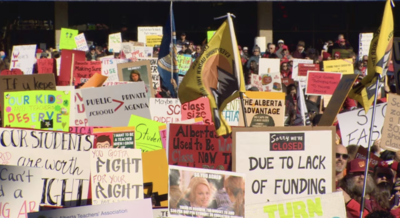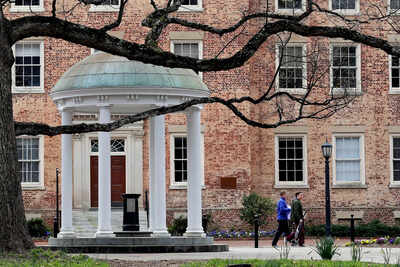Classroom chaos or political misstep: Why Albertans are rallying behind striking teachers

Alberta’s public education system has become a battleground. For the second consecutive week, more than 700,000 students remain out of classrooms as teachers continue their strike over class sizes, support for students with additional needs, and stagnant wages. The dispute, which erupted after nearly 90% of teachers rejected the latest government contract offer, lays bare the widening gap between educators and the Danielle Smith government. While officials tout incremental improvements, hiring 3,000 teachers over three years and offering a 12% pay increase, the measures are being met with skepticism from teachers and parents alike, highlighting deep-rooted concerns over the province’s commitment to quality education.This is not merely a labour dispute. It is a referendum on Alberta’s priorities. Families are grappling with disrupted routines, communities are questioning public policy, and a polarized electorate is weighing in on the future of the province’s schools. The stakes are high: How this dispute resolves could set a lasting precedent for education governance and public trust in Alberta, exposing fault lines in both political will and systemic capacity.
What the survey says
A new Angus Reid Institute poll reveals a striking tilt in public sentiment. Among 807 Albertans surveyed online last week, 58% sided with teachers, while just 21% backed the government and 18% remained undecided. Support is strong among households with school-aged children, with 56% sympathizing with teachers. Even within partisan lines, political affiliation shapes perspective: 82% of 2023 NDP voters back the teachers, whereas 62% of United Conservative Party voters feel current salaries are adequate.The poll also highlights public frustration with systemic shortcomings. Eighty-four percent of respondents say classrooms are overcrowded, and 56% argue teachers are underpaid, pointing to broad agreement on the strike’s core issues. Furthermore, 62% rate the Smith government’s handling of public education as “poor” or “very poor”, and 71% insist that public funding should prioritize public schools over private institutions. These figures highlight a stark reality: The government faces widespread criticism not only for negotiation missteps but also for long-standing governance failings.The strike’s resolution remains uncertain, but the survey signals a clear mandate: Albertans are aligned more with teachers than with political expediency. With demands for 5,000 new hires and wage adjustments that keep pace with inflation, educators are pressing for structural change. As negotiations continue, the balance of public opinion may well shape the future of Alberta’s classrooms, defining both the province’s educational standards and its political picture.ConclusionThe Alberta teachers’ strike is more than a labour dispute, it is a stark indictment of the province’s handling of public education. With classrooms overcrowded, wages lagging inflation, and public confidence in government management eroding, the majority of Albertans have clearly placed their trust in educators over political expediency. As negotiations resume, the government faces mounting pressure to not only resolve the strike but to confront systemic failings, or risk a lasting erosion of both educational standards and public faith.






